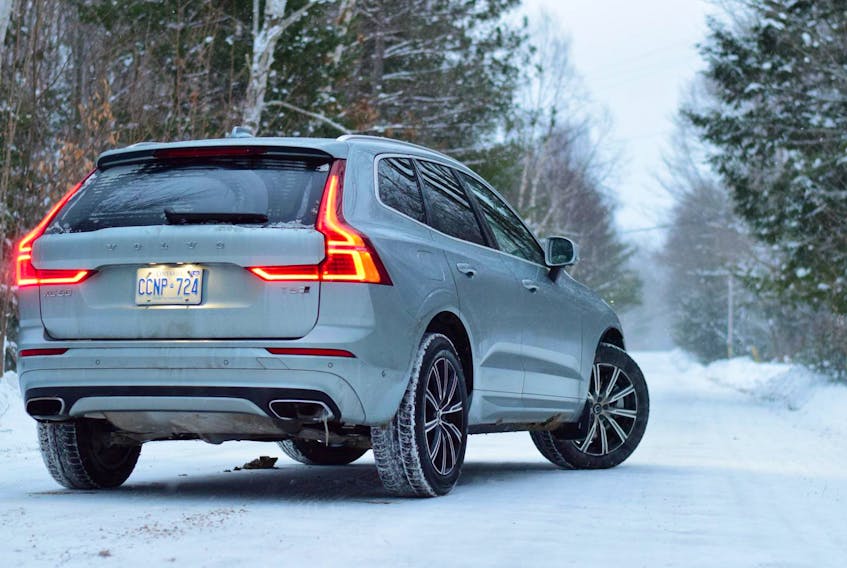Hopefully your trusty car, truck or crossover will escape winter unscathed, after performing reliably in the harshest and coldest conditions of the year.
If that’s the case, the engineers behind the development of your vehicle are partly to thank. That’s because, even at 30 below, the customer expectation is the same — you’ll turn the key, start driving and expect no compromise.
Winter is extremely hard on your ride. In frigid temperatures, engine oil becomes as thick as corn syrup, fuel is challenging to ignite, transmission fluid nearly solidifies, and the power of your vehicle’s battery falls off a cliff.
Building a vehicle that fires up, performs well, achieves good mileage and generates heat for its occupants is quite the challenge.
Recently, I asked personnel from various automakers to share some of their biggest cold-related design and engineering challenges, for a better look at how they ensure vehicles perform properly through a Canadian winter.
Brendan Furlong is Hyundai’s manager of quality assurance. He explains one of the most challenging cold-weather tests a Hyundai engineer might put a prototype model through — the cold-start stress-test.
“Conventional wisdom would dictate that you let your car warm up before hard driving, but these tests do quite the opposite,” Furlong said. “In target temperatures of -20C or colder, engineers will start the vehicle after an overnight cold-soak and immediately drive, measuring durability and various engine protection measures. They aim to evaluate how the engine and transmission perform as they work their way up to normal operating temperature.”
Running an engine while its dead cold is not good. Though modern cars need only a moment to warm up before being driven, engineers still take steps to ensure maximum protection of the driveline for those first few moments of extreme cold driving, where all fluids and components are still frozen.
“Living in a cold region, it is very important that you have the right engine oil suitable for cold climate,” said Stefan Andersson, Volvo’s manager of proving ground support and external test sites. “This will help to save your engine if you are forced to start and give full-throttle without warm-up time. You should also be aware that your steering and brakes will be stiffer than normal before warming up. Basically, the same applies for extreme heat — the right quality of the engine oil helps to save your engine.”
Though temperatures of -45 degrees aren’t common during winter in most of Canada, they’re a regular part of testing for engineers.

“We leverage our northern Canadian climate and use cold cells (when Mother Nature is not co-operating!) to achieve any desired temperature down to -45C. We test and drive the vehicles on various outdoor road courses to assess driveability and durability,” said Nick Fortomaris, GM’s engineering operations group manager, based at the GM cold weather testing facility in Kapuskasing, Ont.
Volvo’s Stefan Andersson adds “down to -50’C, our engineers still carry on with their work.”
Cold weather testing takes place in a combination of real-world environments, and in a lab setting where individual components, assemblies, or entire vehicles can be tested in a controlled climate, with temperatures that simulate unnaturally extreme cold.
From China to New Zealand to Korea to Northern Russia to Kapuskasing, automakers cold test their vehicles around the globe.
“Car projects are nowadays squeezed in time, and almost all manufacturers will have to chase winter climates elsewhere during the normal summer season,” says Andersson.
The extreme cold poses some interesting challenges. A spokesperson from Fiat Chrysler Automobiles (FCA) shared a story in which a team of engineers awoke at 4 a.m. for some testing at 45 below, only to find the rub-strip mouldings on the test vehicles had all fallen off due to adhesive failure. A new adhesive was selected before these vehicles went into production.
Andersson says another common system that’s challenged by extreme cold are touch screens.
“The general trend in the car industry with touch screens are challenging for all car manufacturers in extreme cold,” he said. “The function/reaction of the screens is slower in extreme cold temperature and the driver will experience slower reaction than normal from them. Some vital functions must therefore be controlled outside the screen, with a push button for instance.”
For Hyundai, a big challenge is the HVAC system.
“One of the most complex and challenging systems is the HVAC system,” says Furlong. “We thoroughly test the accuracy of the automatic climate control and requested cabin temperature with an array of sensors during startup and while driving in extreme cold.”
What about unassisted starting of a vehicle in extreme cold? Let’s say it’s the coldest morning of the year and you haven’t plugged in your block heater. Is there a minimum temperature at which the vehicle must still be able to start?
A Honda spokesperson says “no, we sell vehicles around the globe and the expectation is the same everywhere; it just has to start.”
GM has a similar take. Fortomaris explains “no, there is no minimum. In Kapuskasing we expect a vehicle to be able to start at any temperature, without a block heater.”
Andersson adds “cars should be able to start in at least -30’C but will most of the times start at even lower temperatures, depending on how long it has been parked without a heater. Again, cold start performance will also depend on the state of the battery.”









